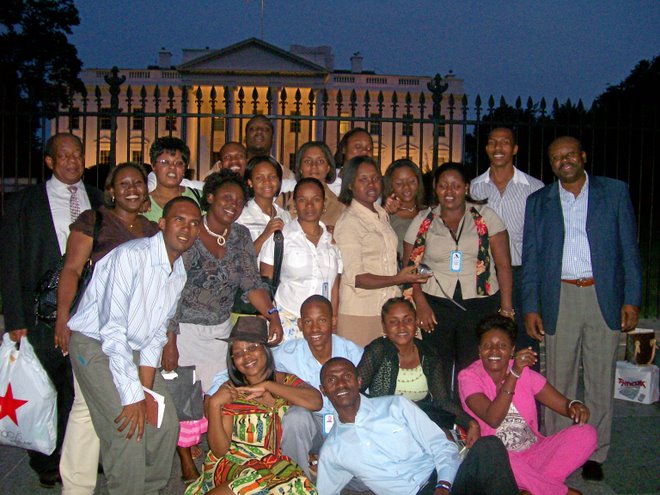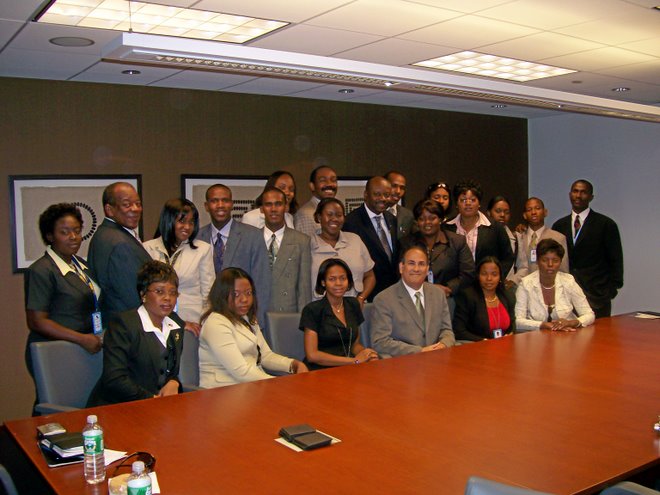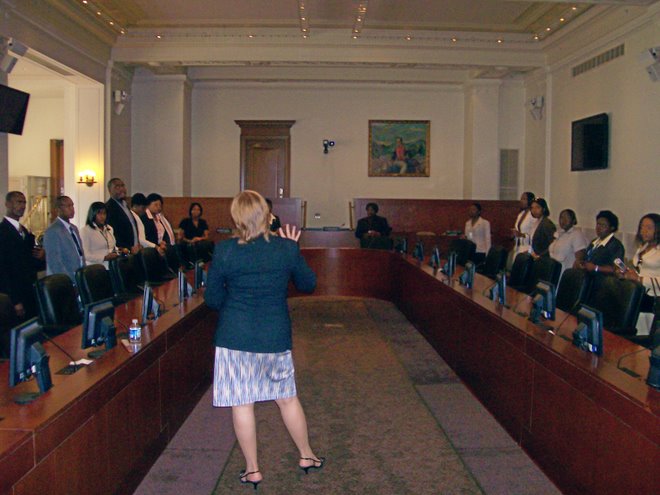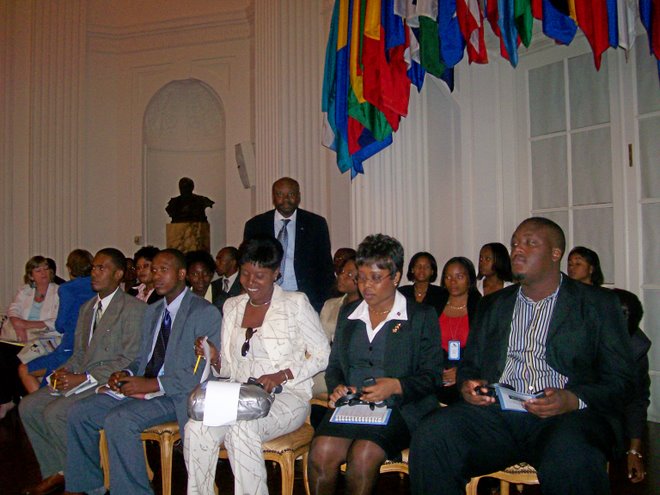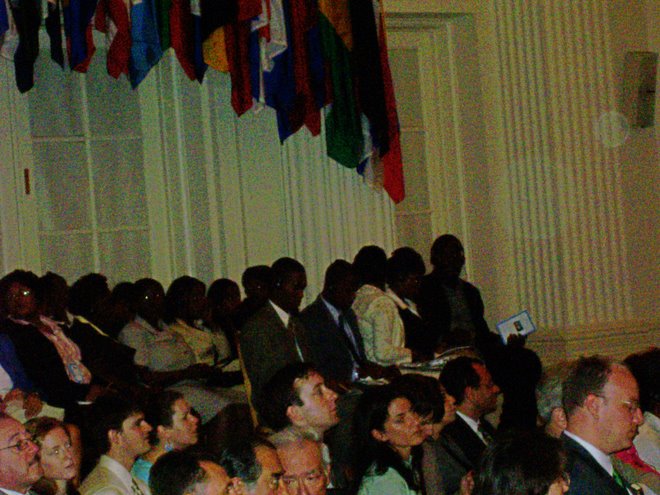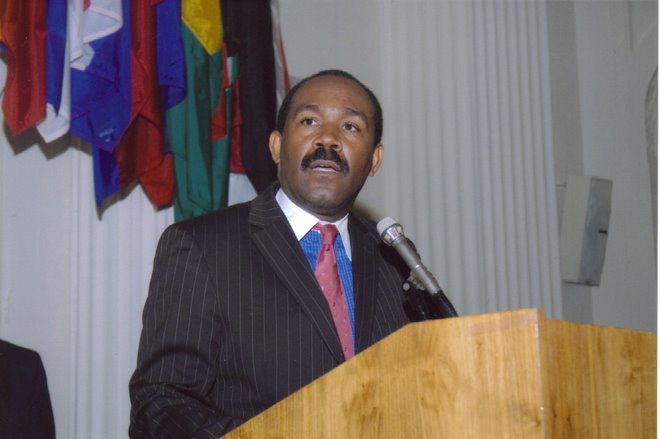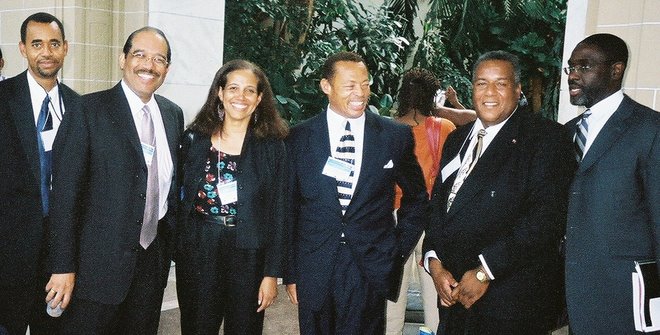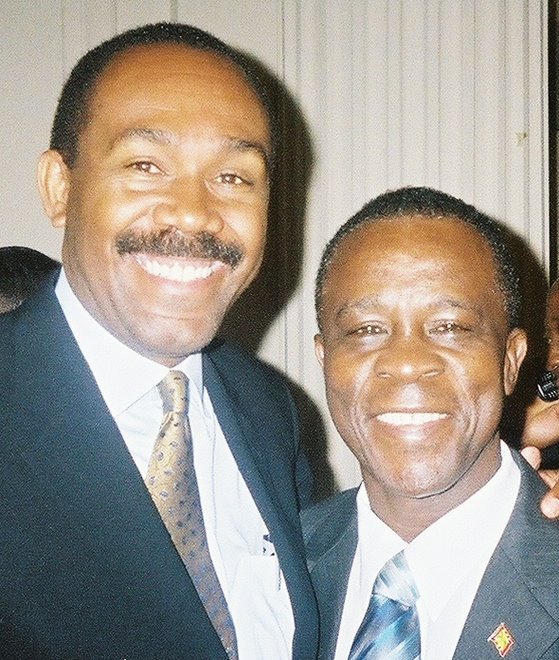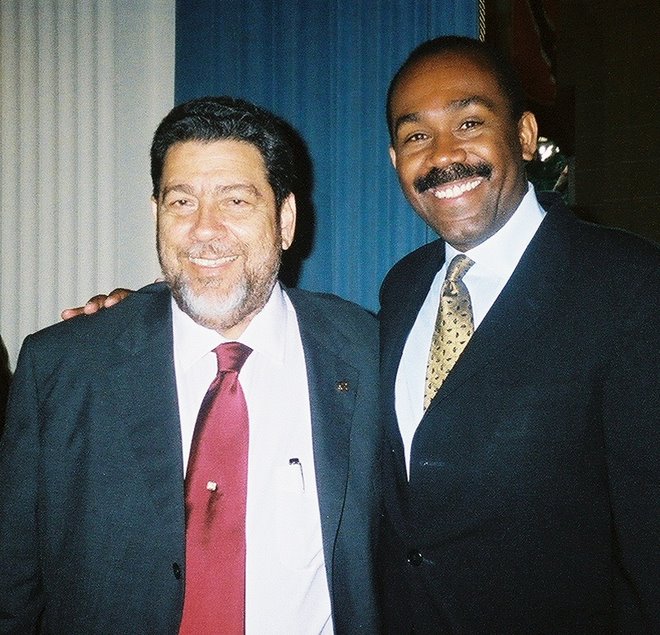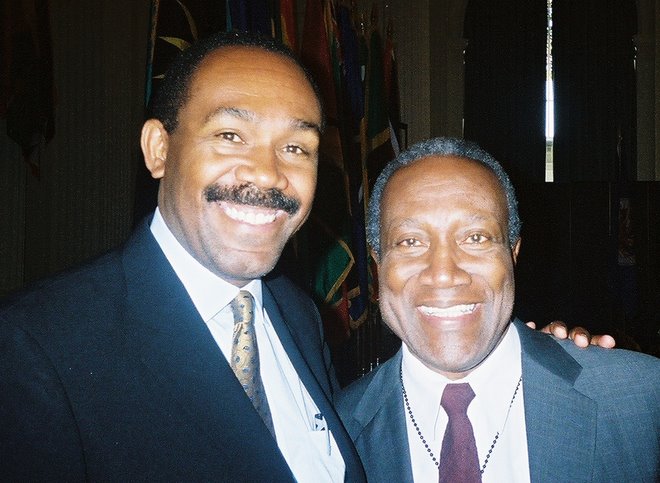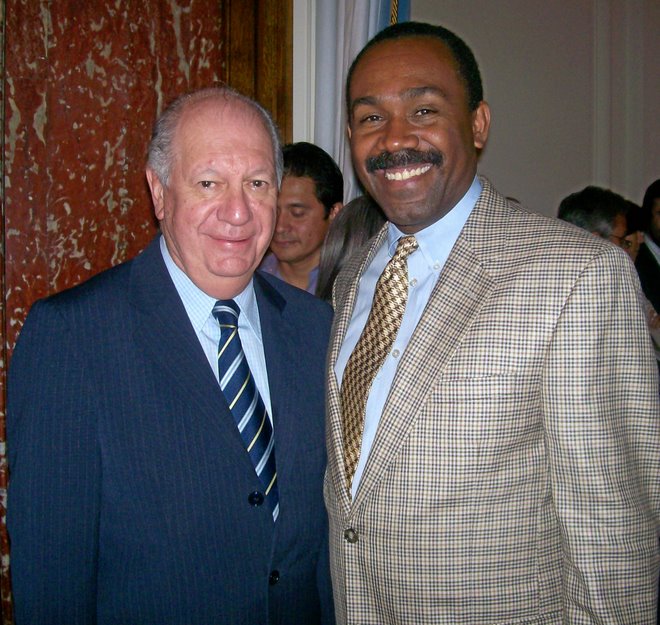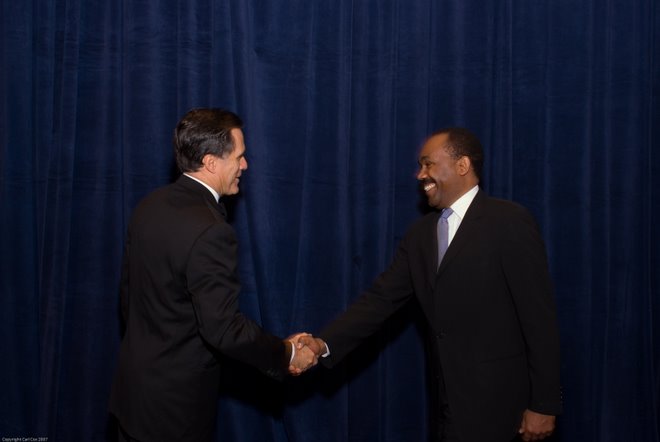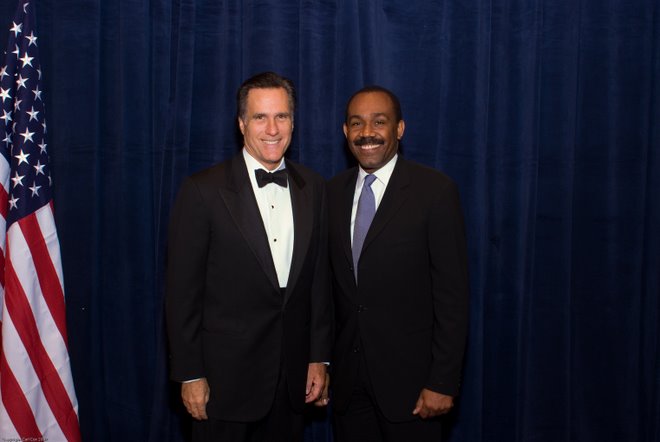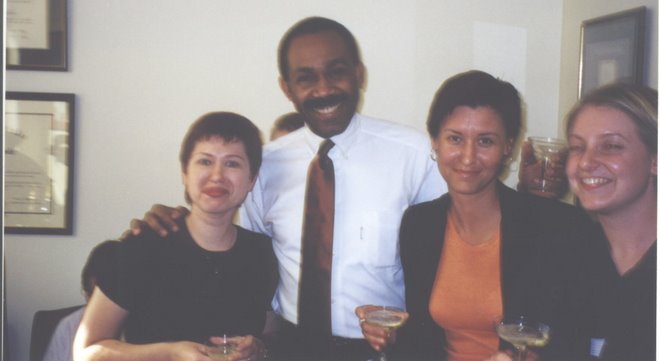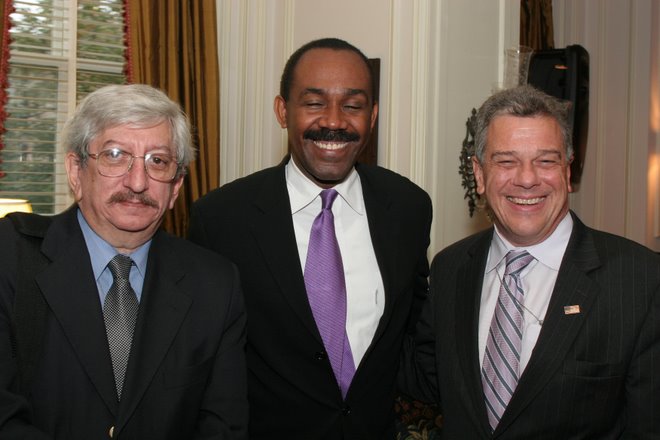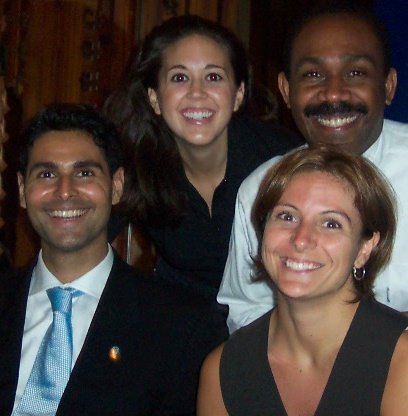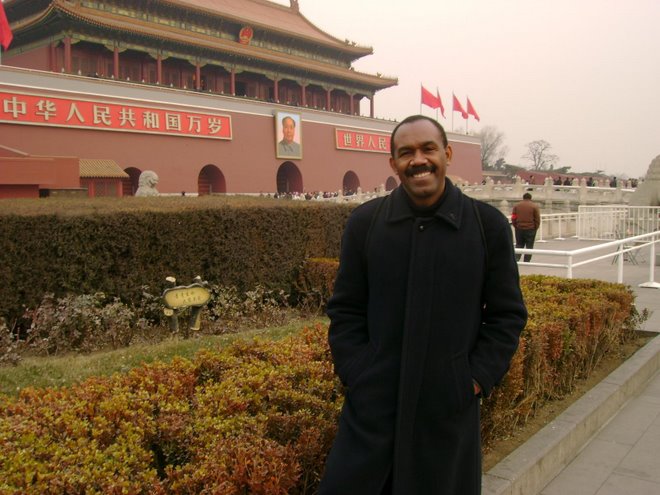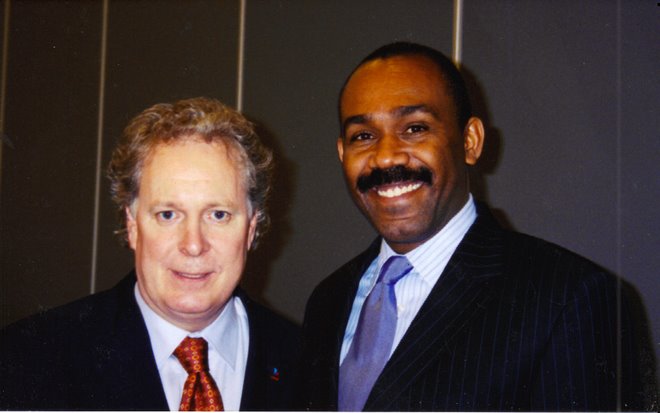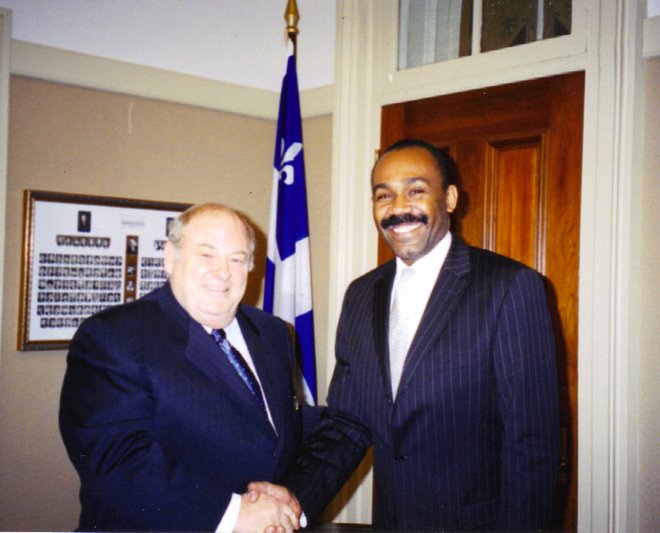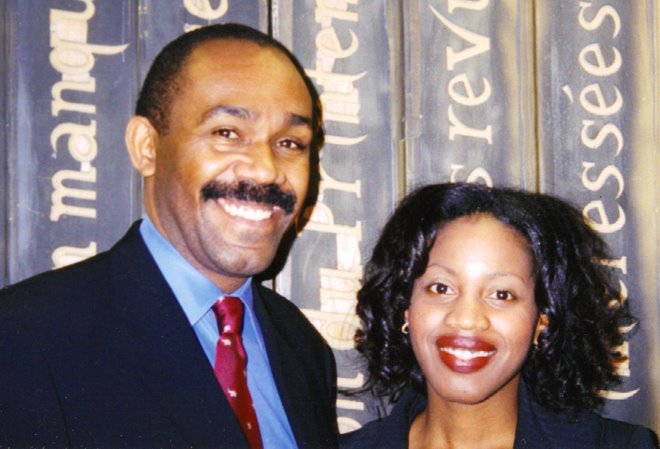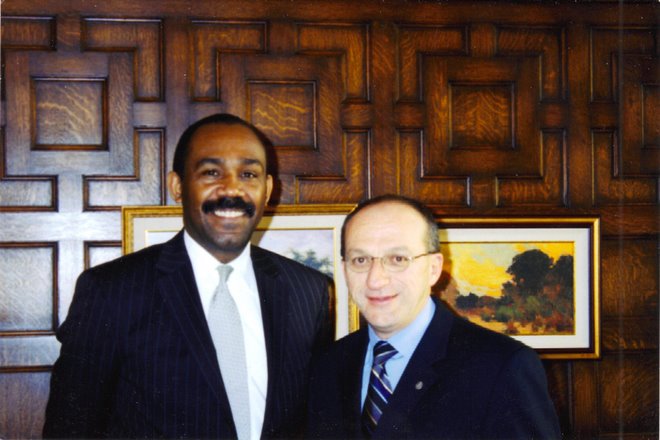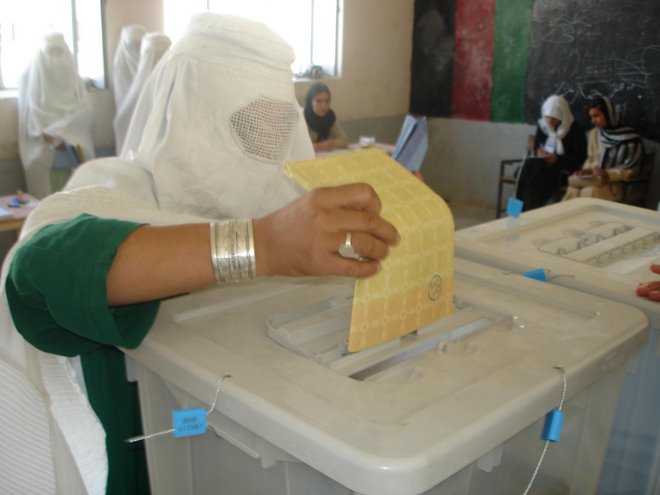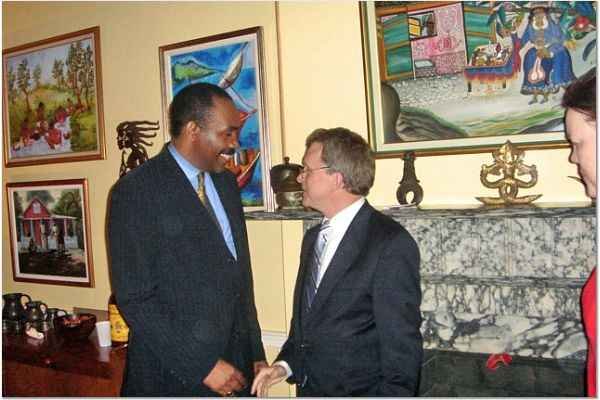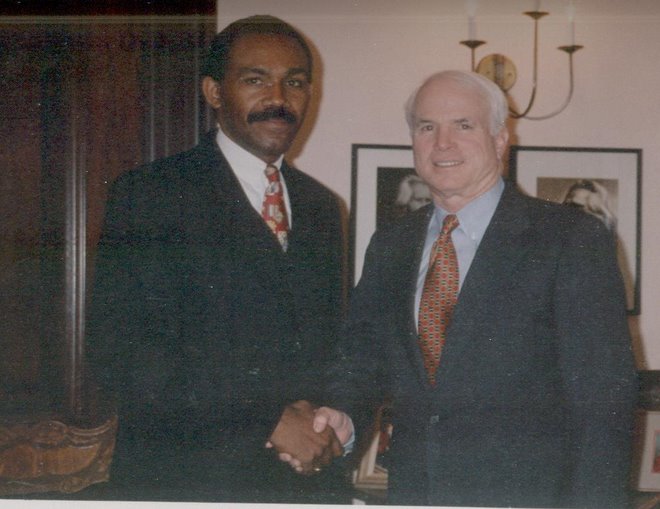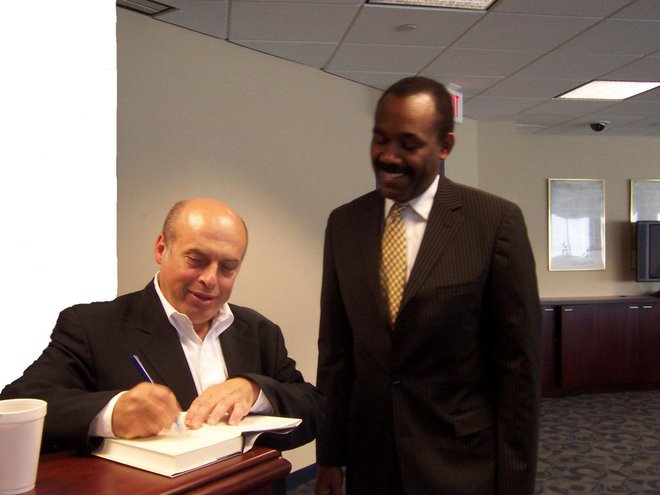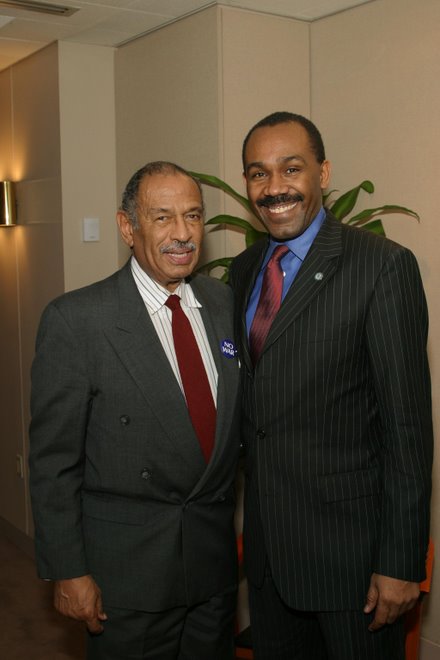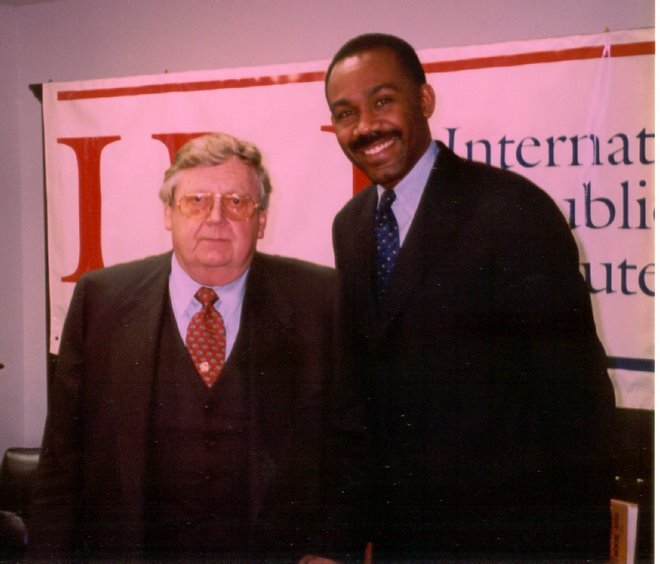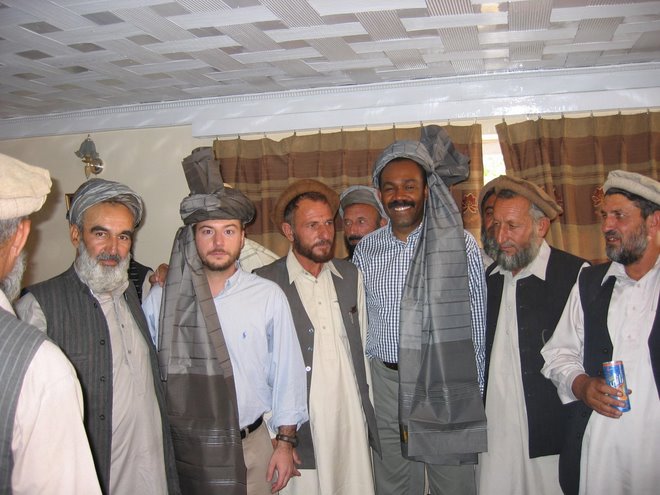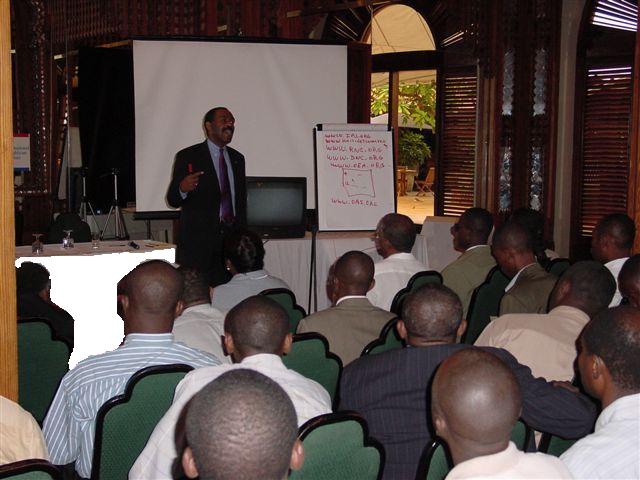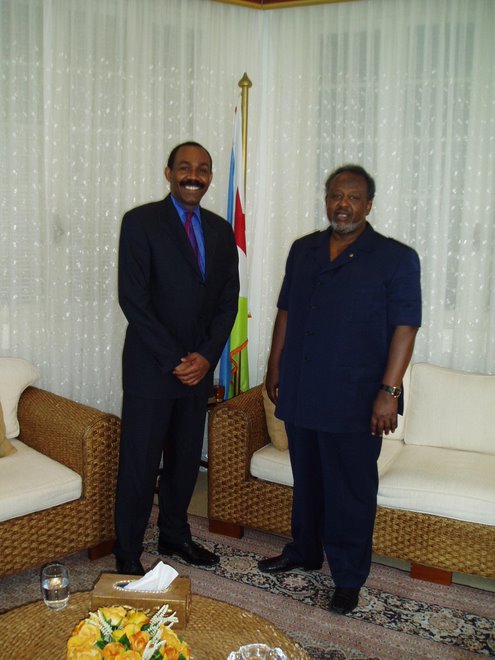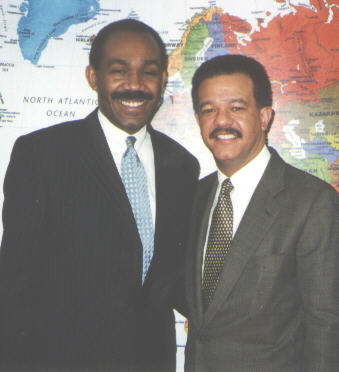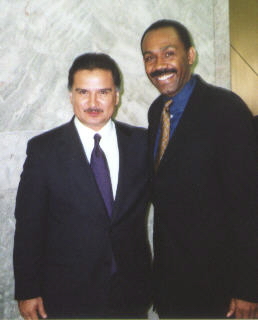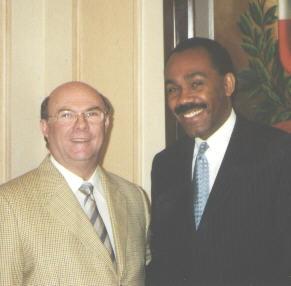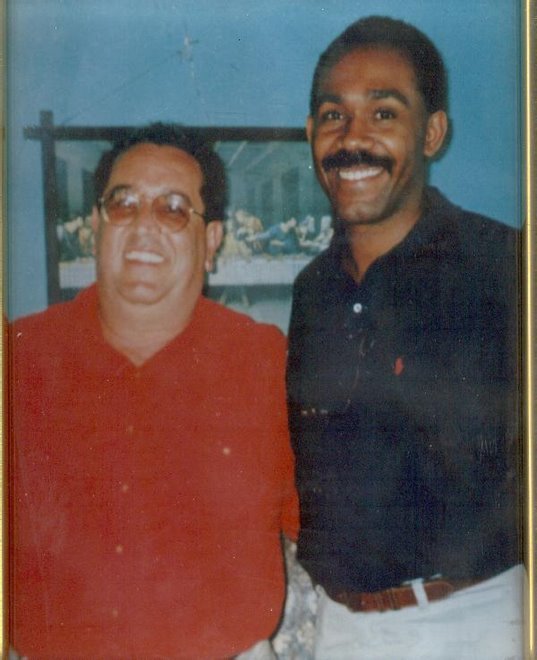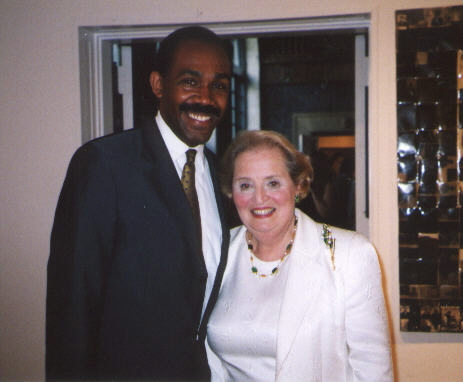
The shock and outrage at the lack of progress in Haiti seven months after the tragic earthquake that killed almost 300,000 people has unfortunately not translated into an uptick in action on the ground. Still 2 million people sleeping in the streets, and there is no comprehensive plan to address this critical housing issue. There have been increased efforts to get new tents and more regularly provide food, but today is no seven months. Shouldn’t we have moved to the longer term planning by this point? Where is all the money? After all the attention to the fact that only 10% of the promised aid money being delivered, there is no progress is collecting those funds? Where did the US$1.1 billion in private donation from the US go?
Some Presidential candidates took advantage of the press bounce from the six month coverage to announce their candidacy, but little coverage has been given to anyone other than Wyclef Jean. The type of worldwide press coverage that his candidacy received does not come cheap; it is the big powerhouse public relations firms that can pull off that type of a media blitz. There are at least three other Haitian Diaspora candidates that have announced and they do not have personal and professional misconduct. Has anyone heard of them?
Furthermore, Haitians are beginning to raise questions about whether or not humanitarian aid is quietly being used to promote the candidacy of one person over another. Haiti has real issues to tackle, and there is a critical lack of coordination and big thinking to address those problems.
The biggest short term challenge is, of course, housing. More than 500,000 people lost their homes in the earthquake. Without their house, they are not only consigned to living in one of the 1,350 makeshift tent cities, but they have now lost any access to credit. It is impossible to imagine how these people will ever pull themselves up out of this situation when there is absolutely no opportunity for them.
Rather than continuing along with this patchwork of aid programs, the most beneficial path forward would be to establish a Haitian Housing Authority. The Authority could essentially operate as a public private partnership with the participation of the World Bank, IADB, international governments, and even other NGOs that have received so much of the aid money. This money would be a fund that Haitians who lost their homes could apply for low interest loans to build new houses, or essentially 30 year fixed mortgages at low interest. This accomplishes many goals: kick starts the economy because people now have access to credit and there will be construction projects; gets the money directly to the people who need it; and eliminates the challenges with working with a corrupt Haitian government. A good system could be set up to vet applicants to ensure that the money is going to the victims of the earthquake. There is even the possibility that there could be a return on investment here and that those funds could be used to do other key projects in Haiti on infrastructure and addressing healthcare and education. In other words, this would be sustainable development.
What we can be certain about is that the current approach in Haiti is woefully inadequate and is in no way sustainable. And rather than address any of this, it seems the focus is now shifting toward elections which the country is not ready for and has the very real possibility of plunging Haiti into further chaos.
Haitians do not want to be idling away their days in abysmal camps and model villages. They need work. They need hope. And they need a vision for the future. Right now, there are working toward nothing, abandoned and forgotten as NGOs toil away to address the critical issues in an ad hoc way.
http://www.digitalturf.net/haiti/reports.cfm?ID=9
The earthquake of January 12, 2010 caused unprecedented destruction of human and physical capital, with losses estimated at 120 percent of Haiti’s 2009 GNP. Without support from the relief agencies, particularly those of the international community , the situation would be worse.
During the first few months, the support of the international community on the ground was visible. Six months later, the massive distribution networks, field hospitals and mobile clinics, set up primarily by the international community, have disappeared. The population is still living in makeshift camps. Living conditions under the tents are extremely difficult and they do not meet international standards for humanitarian relief. Now, many citizens are experiencing forced evictions particularly from camps located on private land, which have resulted in an increase in the number of Internally Displace persons (IDPs) in public squares and streets of the capital and other cities and towns significantly affected by the earthquake.
Meanwhile, reports from International humanitarian relief organizations suggest that they have donated 1.1 Billion US dollars to Haiti to date.
Since March 2010, the Haiti Aid Watchdog (hereinafter referred to as the “Watchdog”) has monitored and evaluated the type, quality and frequency of the aid provided. Whether the $1.1 billion donated by citizens from around the world has had a significant impact on the Haitian IDP’s remains the essential question for the Watchdog. Further, whether the Haitian Government has significantly developed its capacity during the last 6 months to oversee this relief effort is a major concern as well.
According to RNDDH report, Eight (8) properties totaling one hundred fifty (150) acres of land have been requisitioned by the Haitian State to relocate the victims. To date, five thousand (5,000) persons representing approximately 3.8% of IDPs have been relocated to the site of Coral Cesselesse . The majority of the Internal Displace Persons lack food, medical assistance, and sanitation. The lack of electricity on the camps at night provides cover for a substantial increased of sexual abuse. In addition, the threat of two dozen hurricanes scheduled for the summer is making the situation very complicated.
The Inter-Agency Standing Committee in its report six months after the earthquake mentioned that 11,000 latrines have been distributed and 1 million people have benefited from Cash- for – Work programs However, specific details are lacking regarding where these distributions were made and which portion of the population benefited from this assistance.
.
In its March 2010 report, the watchdog presented a list of international relief organizations who at that time had still not presented a report, some 60 days after the earthquake. Looking back, over the last six months, the watchdog has become very concerned with the lack of transparency that most international organizations have shown.
The Monitoring Process
The assessment conducted in July 2010 also involved the review of reviewed 10 websites of international organizations that have collected more than 10 millions dollar for Haiti. The assessment focused on the availability and accessibility of accomplishment reports provided by the relief agencies. [In addition to consulting Websites, theWatchdog visited several camps in and outside of Port au Prince.
FINDINGS
In May 2010, The Chronicle Philantrophy published an updated list1 of 55 international organizations that received money for Haiti. Out of this list of 55 organizations organizations, the Watchdog focused on 18 organizations that collected more than 10 million dollars of relief funds for Haiti.
List of 18 Organizations that raised more than 10 million dollars in relief funds for Haiti
1• American Red Cross had raised approximately $444-million as of May 6, including $6-million from the Hope for Haiti telethon. More than $32-million was pledged to the Red Cross via text message.
2• AmeriCares had raised more than $15-million as of May 10.
3.• CARE USA had raised approximately $17.75-million as of May 7.
4• Catholic Relief Services had raised $135.7-million as of May 10.
5 The Clinton Bush Haiti Fund had raised more than $37-million as of March 16.
6• The William J. Clinton Foundation had received more than $14.5-million as of March 16.
7• The Doctors Without Borders U.S. operations had raised $61.1-million international affiliates have raised $124-million.
8• Habitat for Humanity had raised $11.5-million as of May 10.
9• Mercy Corps had received $14.6-million as of May 7.
10• Operation USA had raised $1.4 in cash as of May 7. It has also received $5.7-million in donations of products.
11• Oxfam America had received $23.2-million as of May 10, $8-million of which came from
the Hope for Haiti Now telethon. Internationally, Oxfam has raised more than $100-million.
12• Partners in Health had received more than $70-million as of May 11, including $8-million
13• Plan USA had raised more than $2-million as of May 10. The group’s international affiliates had
raised $32.6-million.
14• The Salvation Army had raised $20.5-million as of May 10
15• Save the Children USA had raised more than $25-million as of May 10.
As of March, the organization’s international affiliates had raised an additional $35.1-million
16• The United Methodist Committee on Relief had raised $14.5-million as of March 11
from the Hope for Haiti Now telethon
17• World Vision’s U.S. operations had received more than $41-million as of May 7.
Internationally, the organization has raised more than $103-million.
18• Yele Haiti Foundation has received more than $16-million, which includes $1-million
from the Hope for Haiti Now telethon, as of May 11.
Source Chronicle of Philantropy
Out of the 18 organizations identified that had received relief funds for Haiti of 10 million dollars or more, the Watchdog reviewed 10 of these organizations’ websites , which revealed that the 10 organizations received the following relief funding for Haiti:
Catholic Relief Services- $135 million
Partner in Health- $ 70 million
Save the Children- $71.4 million
Doctors without Borders- $61 million
World Vision- $41 million
Oxfam America -$23. 2 million
Salvation Army- $20 million
Americares- 15 million
Mercy Corps- $14.6 million
Habitat for Humanity -$11.5 million
The Watchdog found that the websites provided very limited information concerning the funding that theses organizations had received and what was done with such resources. In other words, key information concerning , the number sites, number of people served by sites, the cost related to each by sites serviced is not available. Indeed, the Information that is available is incomplete and lacks sufficient detail thus rendering those reports almost useless to a stakeholder.
The Watchdog applauds Partner in Health, the Jewish Committee Distribution, Doctor Without Borders, Handicap international and Mercy Corps for providing detail financial and programmatic reports. The majority of international NGOs do not provide detail information which substantially limit the monitoring of the impact of international relief effort in Haiti.
However, the Watchdog is concerned regarding the lack of transparency and incoherence that is reflected in the reports submitted six months after the earthquake by various international organizations. The majority of the 18 organizations closely monitored by the Watchdog do not mention how much money was spent per type of activity and do not mention the geographical areas assisted. Moreover, the information provided in these organizations’ reports (six months after the earthquake) are not consistent with the findings on the ground. For example, some organizations claim that they have spent maillion so dollars on shelter for the IDPs. However, the watchdog has not been able to confirm the shelters to which the reports refer, and certainly not 19 million dollars worth of shelter anywhere in Port-au-Prince or other areas that have been mostly affected by the earthquake.
The watchdog has been informed that an estimated 125,000 transitional shelters are expected to be distributed and implanted in Haiti. However, to date, we do not know when these shelters will be provided or where they will be distributed. Indeed, the National Oceanic and Atmosphere Administration (NOAA) has predicted that Haiti should expect a very active hurricane season this summer. However, with the slow pace of the distribution of this transitional shelter, the Watchdog is very concerned that lives may be lost or put in peril when hurricanes arrive and touch the areas where the camps are located, as said camps will inevitably become flooded.
The Watchdog encourages the Government of Haiti to play a more active role overseeing the impact of the assistance. Six months after the earthquake, there is a substantial coordination deficit of leadership from humanitarian community and the Government of Haiti. There is a need for all stakeholders to engage in a constructive dialogue.
The Watchdog has, on its own initiative, engaged the government through the government’s Ministry of Plan in order to explore ways that civil society organizations such as the Watchdog could play a more significant role in the monitoring and coordination of the humanitarian effort. Through our meetings with officials of the Ministry of Plan, we learned that several international NGOs operating in the country have not provided any report to the Ministry of Plan. Some humanitarian organizations have not officially registered with the Ministry and are not respecting the procedures although the Ministry has organized several meetings and briefing sessions to the international partners.
Recommendations
The international NGOs working on relief and reconstruction in Haiti must provide detailed information on:
Allocation of funds by activities and locations
List all local partners and their accomplishments
Number of beneficiaries targeted and reached
Lessons learned and obstacles on the ground
Corrective actions to address deficiencies in each area.
b) Inform the general public of locations of operations and the type of services offered in a specific area (s) or in the sites with more than 5,000 people. It would be very helpful for the public to see, in the following major sites, items such as stickers, flags, banners and billboards of the international partners working in the particular site: Terrain de Accra, Champ de mars, St Louis de Gonzague, both terrain de golf, turgeau, Canape vert, Place St Pierre, Place de la Paix, Impasse Morond, Centre de Carrefour, Terrain de Amurtel, Ancien aéroport militaire…
c) The Watchdog Group encourages the international partners to organize periodic briefing sessions with civil society organizations and government officials. If information is provided to the Haitian media and other civil society organizations, it would help the public understands better what is being developed and how it is being distributed and accounted for. 7 months after the earthquake, it is time for the people of Haiti to be informed about which organizations are working on the ground?; where are they working?; and what are they doing?; How many Haitians are being hired by the international organizations? What impact the programs have in the IDP camps .What are these organizations’ plans during the hurricane season as it relates to assistance to the IDP camps? It may be helpful if a map could be distributed to all civil society organizations and to the press identifying which organizations are working in specific areas of the country.
ANNEX #1
UPDATED LIST OF ORGANIZATIONS THAT COLLECTED HUMANITARIAN RELIEF FUNDS FOR HAITI
AS OF
MAY 11, 2010
1• ActionAid has raised more than $419,000 as of March 2.
•2 Action Against Hunger International has raised more than $7-million globally as of May 10.
• 3Adventist Development and Relief Agency had raised $6.9-million as of May 11.
4• The American Jewish Joint Distribution Committee had raised more than $6.1-million as of March 16.
5• American Jewish World Service had raised more than $5.7-million as of May 10 for its
Haiti Earthquake Relief Fund.
6• American Red Cross had raised approximately $444-million.
7• AmeriCares had raised more than $15-million as of May 10.
8• Brother’s Brother Foundation had raised $725,000, and secured a pledge of $100,000, as of May 10.
9• CARE USA had raised approximately $17.75-million as of May 7.
10• Catholic Medical Mission Board had raised $1.92-million in cash
11• Catholic Relief Services had raised $135.7-million as of May 10.
12• ChildFund International had raised $450,767 as of February 16.
13• Church World Service had raised $3.2-million as of May 10.
•14 The Clinton Bush Haiti Fund had raised more than $37-million as of March 16.
15• The William J. Clinton Foundation had received more than $14.5-million
16• Concern Worldwide US had raised $3.2-million as of May 10.
17• Cross International had raised $4.6-million as of March 16.
18• Direct Relief International had raised $6.1-million in cash through the end of April.
18• The Doctors Without Borders U.S. operations had raised $61.1-million
20• Feed the Children had raised $1-million as of May 7.
21• Fonkoze USA had raised $1.26-million as of May 10.
22• Friends of the World Food Program had raised $13.1-million, including $6-million fMay 10.
23• Habitat for Humanity had raised $11.5-million as of May 10.
24• Handicap International’s U.S. operations had raised $431,000 as of May 10.
25• Heifer International had raised $1.4-million as of May 10.
26• The Humane Society has raised more than $1-million.
27• IMA World Health has raised more than $291,000 as of May 7.
28• International Medical Corps had raised more than $6-million as of May 7.
29• International Relief and Development has raised $345,000 in cash as of May 11. It has also
received $12.5-million in gifts of products and supplies.
30• The International Rescue Committee had raised $6.6-million as of May 10.
31• Internews Network, a nonprofit group that promotes journalism abroad, received $200,000 from
the John S. and James L. Knight Foundation.
32• Islamic Relief USA had raised more than $2.1-million as of March 2.
33• The Lions Clubs International Foundation had raised $4.7-million as of May 13.
34• Lutheran World Relief had raised nearly $6.5-million as of May 7.
35• Medical Teams International had raised $4.5-million as of May 10.
36• Mennonite Central Committee had raised $5.18-million and raised another $8.1-million in Canada.
37• Mercy Corps had received $14.6-million as of May 7.
38• Operation USA had raised $1.4 in cash as of May 7. It has also received $5.7-million in donations of products.
39• Oxfam America had received $23.2-million as of May 10, $8-million of which came from the
Hope for Haiti Now telethon. Internationally, Oxfam has raised more than $100-million.
40• The Pan American Development Foundation had raised more than $1.61-million as of February 23.
41• Partners in Health had received more than $70-million as of May 11, including $8-million
from the Hope for Haiti Now telethon.
42• Plan USA had raised more than $2-million as of May 10. The group’s international affiliates
had raised $32.6-million.
43• Population Services International had raised more than $174,000 as of May 10.
44• Project HOPE had raised $1.7-million in cash and pledges as of May 10. It has
distributed $35-million in medical supplies.
45• Relief International had raised more than $533,000 as of May 10.
46• The Salvation Army had raised $20.5-million as of May 10.
47• Save the Children USA had raised more than $25-million as of May 10. As of March, the
organization’s international affiliates had raised an additional $35.1-million.
48• The U.N. Foundation had raised more than $3.9-million as of May 11.
49• The Unitarian Universalist Service Committee had raised more than $1.84-million .
50• United Way has raised more than $3.2-million as of May 13.
51• The United Methodist Committee on Relief had raised $14.5-million as of March 11.
52• The University of Miami had received $4.4-million as of March 2.
53• The U.S. Fund for Unicef had received $65.4-million in cash.
54• World Vision’s U.S. operations had received more than $41-million as of May 7. Internationally,
the organization has raised more than $103-million.
55• Yele Haiti Foundation has received more than $16-million, which includes $1-million from
the Hope for Haiti Now telethon, as of May 11.
SOURCE; THE CHRONICLE OF PHILANTHROPY MAY 2010 REPORT
Link; http://philanthropy.com/article/11-Billion-Donated-for-Haiti/65479

















































































































-3.jpg)


.jpg)





.jpg)











.jpg)
.jpg)
.jpg)
.jpg)
.jpg)
.jpg)


















